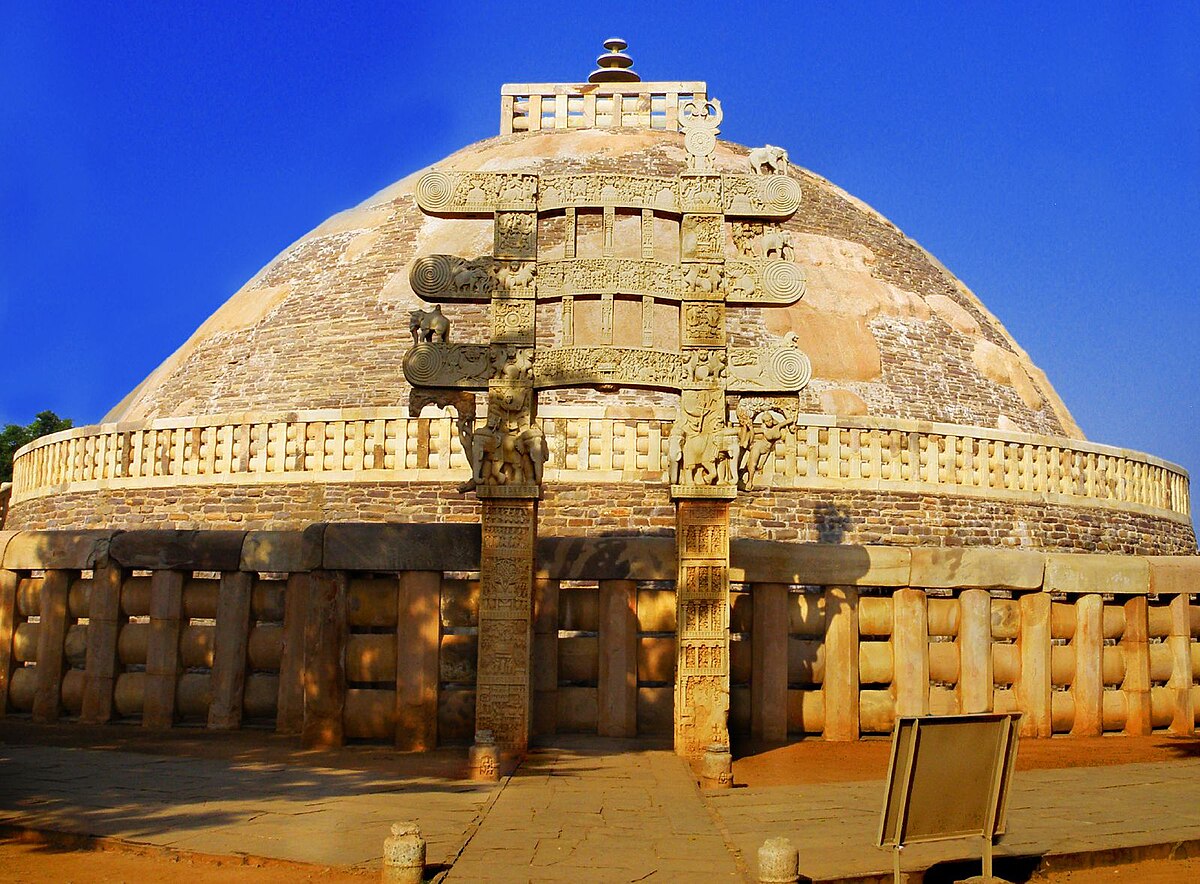Discover the ancient beauty of Sanchi Stupa, a UNESCO World Heritage site that tells the story of India’s Buddhist heritage.

Sanchi is important to us in Sri Lanka because the foundation of Emperor Ashoka’s Buddhist revival movement was laid from this place. The chronicles state that Emperor Ashoka built eighty-four thousand monasteries and temples throughout India. The temple industry also began from this place. The missionary movement he started also originated from Sanchi. This area is also the birthplace of Mahinda thera, and it is mentioned in the chronicles that he lived in the Sanchi temple before coming to Sri Lanka. It is a famous place as a place of propagation of the Dharma, a place of purification of the Shasana, a place where the great Arahants lived, and a place where the relics of the Arahants were deposited. The remains of about forty monasteries and monasteries can be seen among the ruins of Sanchi. The most impressive site in Sanchi is the Sanchi Great Stupa, a dome-shaped stupa enshrining the omniscient Buddhas. It was built by Emperor Ashoka in the third century BC. It is 54 feet high and 120 feet in diameter. There are four pavilions leading into the courtyard, which contain human figures, Jataka stories, and philosophical interpretations.
Among other art forms in India, the carvings of the Sanchi Pandol have a special place. It is truly the pinnacle of Buddhist art. This Pandol was built in the first century BC. The Pandol, which is located on two square stone pillars, is carved with very delicate and beautiful Jataka stories. Various moments and characters of the Bodhisattva period are carved in these Pandols. However, the Lord Buddha is never recreated in life in these carvings and he is depicted as a symbol using a lotus flower and a lotus. For example, the way the Buddha enters the Sankappa, how Prince Siddhartha enters the garden, the Jetavanarama Puja, the Sat Satya, the cremation procession, the Pirith sermon on the removal of the three fears in Visala, the Dhatu Perahera, the bringing of the Sri Maha Bodhi to Sri Lanka, the Sama Jataka etc. are seen as paintings and carvings.
